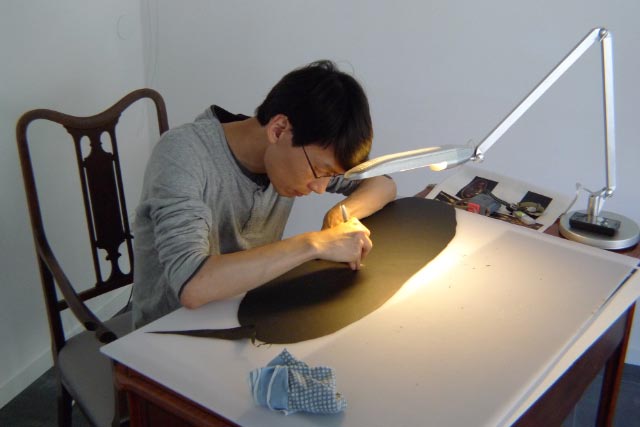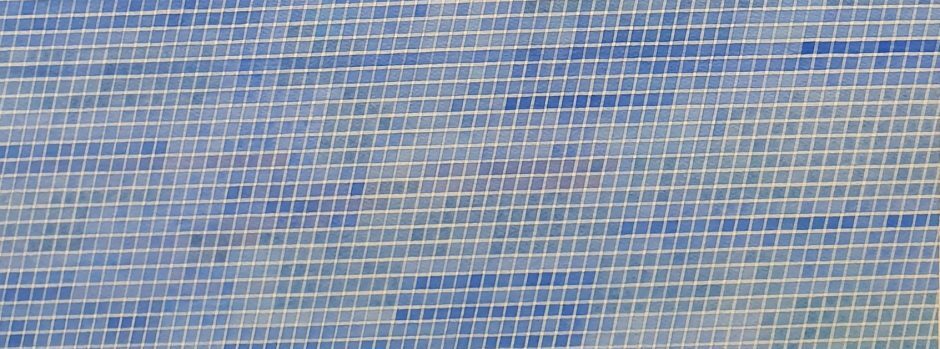





METAMORPHOREST:
DIALOGUE BETWEEN PAPER AND BACTERIA
We are living in and generating by ourselves complicated boundary faces.
The presented „Metamorphorest:dialogue between paper and bacteria“ (2010) is an installation artwork consists of a semi-abstract papercutting composition, video recording of particular (photosynthetic) bacterial movements under the microscope, bacterial cultures originally isolated from ponds in Tokyo and lakes and the Danube (Donau) river around Linz, and flasks to generate multiple boundary conditions among/inside these elements. Combination of the various items is multiply constructing the floating and complicated boundary faces, reflecting our living condition at the cellular, individual, philosophical, societal and ecological levels. Metamorphorest is a synthetic word combining metamorphosis, forest and metaphor.
PAPERCUTTING
In order to pursue the characteristics of the papercutting, such as `fragility´, `translucency`, `physicality`, `texture`, `technical restrictions`, various abstract motifs are cut as improvisation (however taking plenty of time). Then by displaying them in the position, which seems to be random at a glance, three-dimentional multiple faces are constructed.
For specifically this exhibition, I used some motifs of human body sections as well. I expect combining this with biomedia-related presentations would generate new border faces.
VIDEO OF (CYANO)BACTERIAL MOVEMENTS UNDER THE MICROSCOPE
On the movies, various movements of cyanobacteria (bacteria with photosynthetic function, which is the origin of chloroplasts in plants) and the processes of their morphological formation, time-lapse-monitored with various microscopes, are shown. Note that these patterns of bacteria inthe video are not their „intrinsic featuresin natural conditions“, but those under special semi-artificial environments isolated and set under the microscope by me, who controlled them somehow. Thus, the forms of bacteria in the video image are generated in the intermediate phase, which can be seen as a relationship between human being and bacteria. Their patterns provide us with fundamental questions on not only the concept of nature, but also the standpoint of creation in visual art, by objectifying the standpoint. That is why I made images to „face“ and „communicate“ with the abstract paper curouts. In addition, we may realize similarity and difference between bacteria and ourselves. Note also that we are also combinations of various bacteria and human cells.
BACTERIA
I also exhibit some bacterial cultures originally isolated from a pond in my working place (Waseda University in Tokyo) and from lakes and the river Donau (Danube) here in Linz. They will gradually change their looking by their growth during the exhibition. Most of them were not scientifically analyzed or documented at all. For example, on this occasion I displayed some agar-eating bacteria and structural-color-exhibiting bacteria. Especially, to my knowledge, the latter has not been described before. Some green human will be surrounded by comfortable blanket of photosynthetic bacteria under the light during the course of exhibition.
FLASKS
The round-bottom flasks could be an apparatus to rationalize science – strongly objectified and architectural activities – from alternative perspective by using the glassware, which was originally made for science, for aesthetic and non-scientific purposes. It can also be an ambient lighting for the paper cutouts. A part of it may be used for culturing real cyanobacterial strains which are often used for genetic and physiological studies in biological laboratories. Flasks also form some boundary faces between the video images and papercutting.
ACKNOWLEDGEMENT:
I thank the aircube-project (the gallery wuensch) for this fruitful artist-in-residency program (July 29 to August 23, 2010), and the Biolab at the ARS ELECTRONICA CENTER (LINZ) for the use of materials and laboratory equipments. Especially,Mr. Stefan Schwarzmair (AEC) provided an excellent technical support. This exhibition is also partly supported by the Waseda University Grant for Young Investigators.
HIDEO IWASAKI, artist/biologist
Born 1971 in Tokyo. Associate Professor of the Laboratory for Molecular Cell Network & Biomedia Art at the Departement of Electric Engineering and Bioscience, waseda University, Tokyo. His recent artworks have been exhibited in the 10. BIENAL DE LA HABANA 2009, the HOLLAND PAPER BIENNIAL 2010 and the 1. LIGHTART-BIENNIAL LINZ 2010.
HIDEO IWASAKI LAB
HIDEO IWASAKI
www.artmarket.at
press
fotos|galerie wuensch aircube

Du muss angemeldet sein, um einen Kommentar zu veröffentlichen.